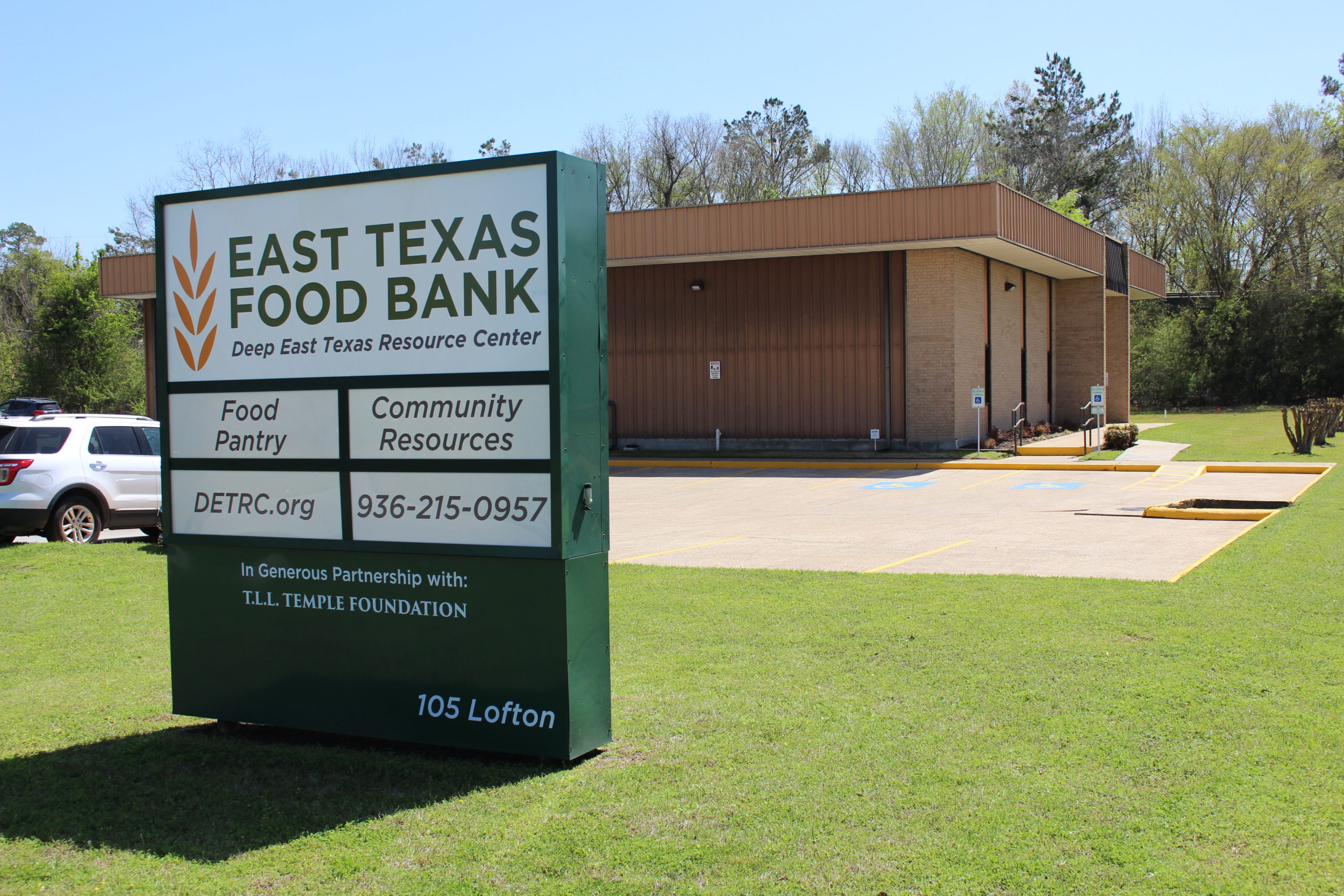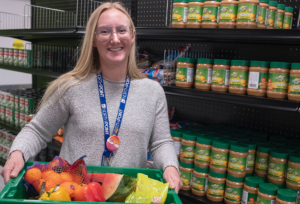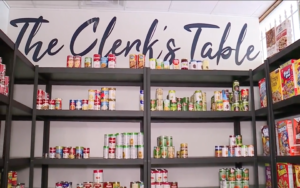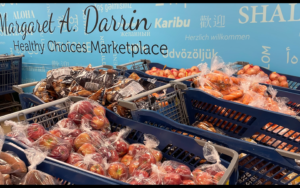Add two more food banks to the list of those opening their own model food pantries.
Care and Share Food Bank for Southern Colorado and East Texas Food Bank both recently opened distribution outlets that incorporate food-pantry best practices. The pantries operate in a supermarket style, allowing clients to pick and choose their own food, are open for extended hours, and emphasize fresh and healthy food. They’re also strategically located to address the most underserved areas of the food banks’ operating networks
The self-owned and operated pantries — a first for both food banks — are part of a growing trend, as food banks become more proactive in addressing shortcomings of their current pantry networks. In addition to providing more funding for things like forklifts, shelving, fridges and freezers to meet the operational needs of their existing pantries, food banks are seeking to address outright gaps in their service areas by building their own high-performance pantries.
At Northwest Harvest in Seattle, for example, that has meant opening a modern, Trader Joe’s-like pantry. At Houston Food Bank, it has meant partnering with a local healthcare organization to open fresh food markets (two so far) inside health clinics to serve patients at risk of diabetes.
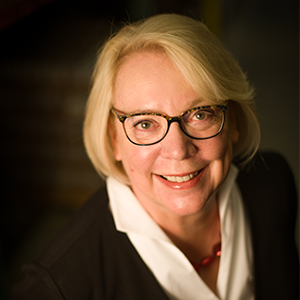
For Care and Share, running its own food pantries is about bringing a dignified shopping experience to its most underserved communities. “We really wanted to take a look at our areas of greatest need and figure out how to get into those areas,” said Lynne Telford, CEO at Care and Share, Colorado’s second-largest food bank with $48 million of 2019 revenues, according to Food Bank News’ listing of the 100 largest food banks.
Care and Share’s Sunny Side Market is currently up and running in two locations, including a Spanish-speaking community that recently lost its only grocery store, leaving only a gas station and a 7-11 as food-shopping options for those without transportation. In the other location near a U.S. Army base, one of Care and Share’s food-pantry partners had suddenly closed.
In the first location, Care and Share ended up purchasing and renovating a building, giving it a “great opportunity to make it light and bright and beautiful,” Telford said. “We wanted people to walk in and feel like they’re coming to a nice place.”
Clients do not check in when they arrive at a Sunny Side Market, but rather “check out” at the end, using a key fob with a barcode on it. “It feels like a normal shopping experience,” Telford said. “It’s more dignified.”
Clients sign up to become Sunny Side Market shoppers by enrolling online (they must reside in the neighborhoods being served). Those who have not signed up in advance can get help doing so upon arrival. Once clients sign in that very first time, they never need to check in again.
Clients are encouraged to come in once a week and take what they need. Some items are available only in limited quantities, but many items have no limits. And while there is no overall limit to the amount of food a person can take, the shopping carts are small, Telford noted.
In Texas, the Deep East Texas Resource Center is a central piece of an overall initiative to fight food insecurity in an 11-county area where nearly 20% of residents are at risk of hunger. Buoyed by a nearly $2 million grant from a local foundation seeking to alleviate poverty in the region, the new resource center will house an extended-hours food pantry, a warehouse, a demonstration kitchen and community meeting rooms.
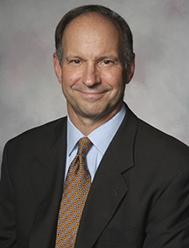
“We wanted to build a model pantry to showcase to agencies in our service area, and also serve that community,” said Dennis Cullinane, CEO of East Texas Food Bank, the seventh-largest food bank in Texas, with $32 million of 2019 revenue, according to Food Bank News’ listing of the largest 100 food banks. The food bank is leasing the 6,000 square-foot building from the local foundation for $1 a year.
Besides providing food, a major goal of the resource center is to offer wraparound services. In addition to SNAP benefits, clients can access nutrition education classes, health screenings, financial literacy training, and utilities assistance among other things. “We’re really bringing together a lot of services that are already in the community,” Cullinane said. “The food bank is adding the punch of additional resources, especially the food.”
The new facility also has enough freezer and fridge capacity to house two truckloads of fresh produce, allowing it to serve as a distribution arm for nearby partner agencies.
Both Care and Share and East Texas see their new pantries as prototypes to be replicated in other high-need areas. Ideally, however, both food banks would prefer to bulk up existing strong agencies. “We don’t want to compete with our own agencies,” Telford noted. But if no partners are available in certain areas, then “we would go in,” given community buy-in, she said.
While both food banks currently send mobile food pantries out to remote, strategic locations, both executives agreed that brick-and-mortar pantries can be more effective. East Texas’ eight mobile food pantries are “not moving the needle fast enough,” Cullinane noted. At Care and Share, the mobile food pantries are not available for as many hours as the Sunny Side Market, Telford said.
In running their own food pantries, both food banks are incurring more expense than they normally would. Telford noted the need to pay for a manager, insurance, electricity, as well as a cold-storage van for each location to shuttle food when items are running low. “It’s way more expensive than we originally realized,” she said. “It’s not horrendous, but it adds up.”
At the same time, Telford noted, Sunny Side Market is attractive to funders. “It’s a great place to take donors.” — Chris Costanzo
Like what you’re reading?
Support Food Bank News